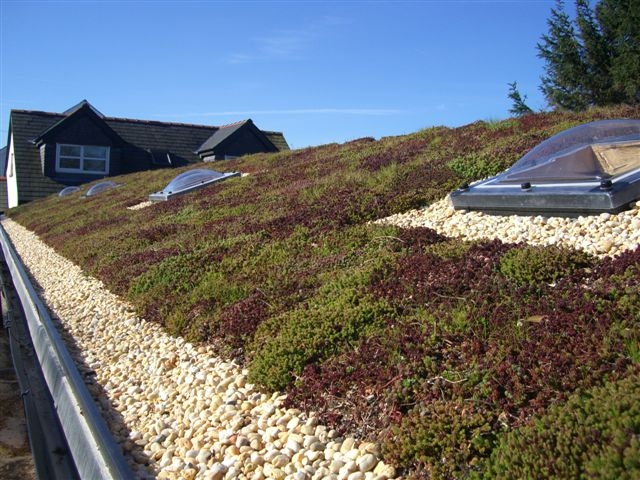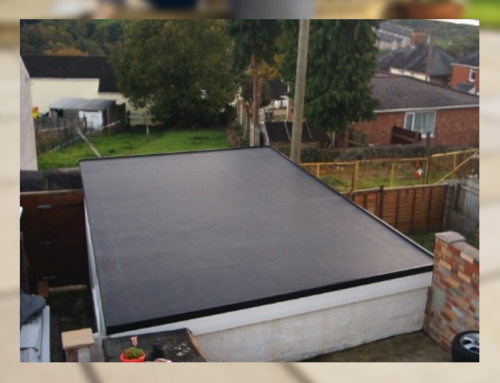Today’s modern homeowner considers many things before deciding on what types of home improvements they will make. When it comes to roofing, many homeowners have traditionally simply gone along with the builder’s view of the roof, but today, even roofing materials are being thought about carefully – and in a world where the environment is coming to the forefront of decision-making, an increasing consideration is green roofing.
What is green roofing?
Green roofing is most commonly seen on flat roof installations in urban environments. It consists of an organic surface, placed upon layers of waterproofing and drainage. The effects of a successfully-installed green roof can be stunning; beautiful to look at, and create a haven for wildlife, bees and insects.
Green roofing in urban areas is being actively encouraged by commercial and domestic local authority planning departments due to the additional benefits that can be realised in water conservation, as they take the pressure off storm drains during particularly heavy rain. As urbanisation increases across the UK, there are fewer green spaces to do this, which eventually leads to a greater volume of free-flowing water in storm run-offs and surface water drains.
What types of green roof can you have?
There are three main types of green roofs that have different applications. They include the extensive green roofs, intensive and semi-intensive green roofing.
Extensive green roofing typically has planting that grows up to 6’’. The plants are commonly lightweight and easy to manage through the different weather seasons. Moss roofs or sedum matting can be ideal for this type of roof.
Intensive green roofs grow up to 12’’ or more. The plants are typically bulkier than for extensive green roofs, and sometimes incorporate walkways. The roof deck might need reinforcement to be able to support the additional weight. These are mostly roof top gardens that require regular maintenance.
The semi-intensive green roofing project combines extensive and intensive planting. These types of roofing projects are often used commercially and can be used to create roof gardens and office relaxation areas. The most common type of vegetation used is grass, herbs and shrubs. Different beautiful garden designs can be used in the semi intensive green roofs to bring out its high aesthetic value.
The importance of the base membrane in a green roof
The waterproofing membrane is arguably one of the most important elements of your green roof. This must be highly reliable as a leaking green roof is complex and expensive to repair. This is because the repair involves the green roof layers to be completely stripped back to repair the membrane, effectively leaving you to start all over again.
Permaroof Newcastle install EPDM rubber roofing systems across the region, which are the perfect base layer for green roofing projects. With a life expectancy of more than 50 years and high performance waterproofing throughout its life cycle, it is easy to see why EPDM is popular for green roofing projects.
Talk to us today about your Newcastle green roofing plans and let us help you with a reliable, high-performance roofing system to offer you the longevity to need. All our work is covered by an insurance-backed guarantee in addition to long membrane warranty. Book your free roofing survey today or find out more about our EPDM rubber roofing services here.

